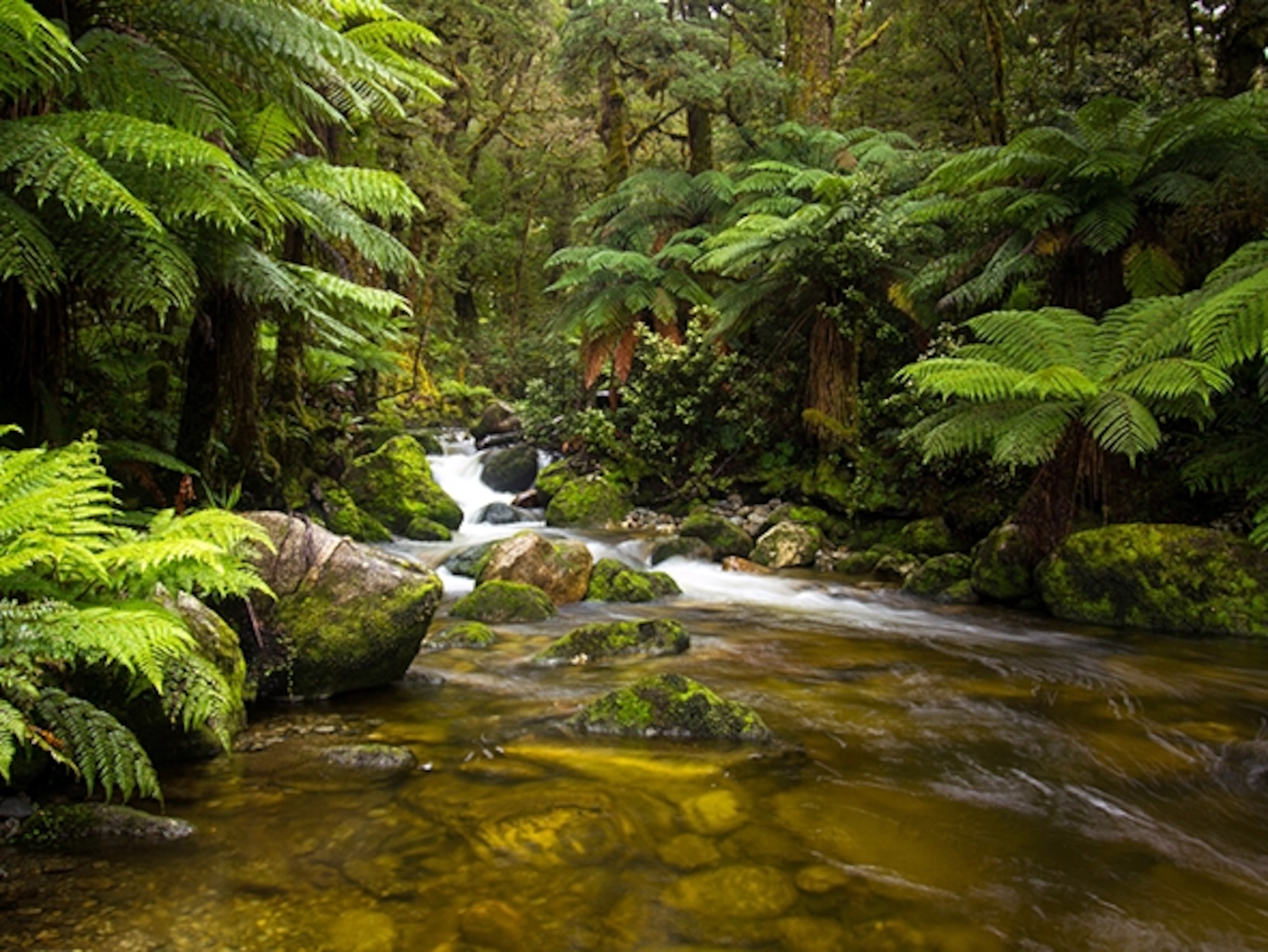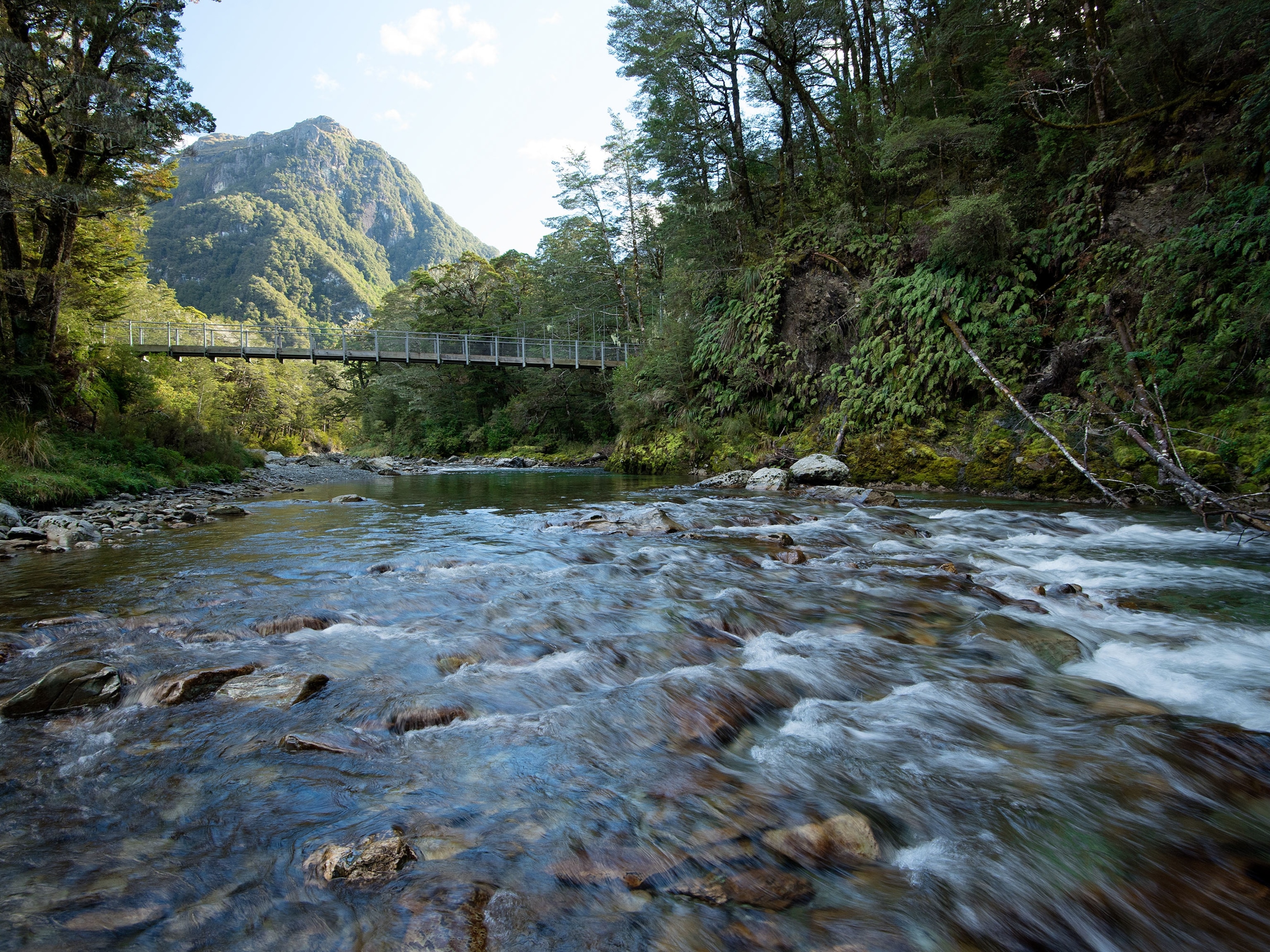
Surviving New Zealand’s Hardest Hike
Fiordland National Park, tucked away far within New Zealand’s South Island, has the notorious claim to fame as one of the wettest locations in the southern hemisphere; and with a mean annual rainfall of 268 inches, it is not just a claim but a rudely saturated reality. For those who wish to experience the spectacle,…
Fiordland National Park, tucked away far within New Zealand’s South Island, has the notorious claim to fame as one of the wettest locations in the southern hemisphere; and with a mean annual rainfall of 268 inches, it is not just a claim but a rudely saturated reality.
For those who wish to experience the spectacle, your options are quite limited, for the vast majority of the place is simply inaccessible. The most common option: Take the path of least resistance and make the pilgrimage to Milford Sound. Just follow the well-marked road signs, souvenir shops, and the rest of the camper vans and tourists. The much less common decision: Throw yourself off the deep end by accepting the challenge of the country’s hardest trail, the infamous Dusky Track, an 84-kilometer route that impossibly forces its way through this impermeable landscape. Just follow the little orange triangles. Quite simple really. Or better yet: turn back now. Please. It is far too late for this poor soul.
Hour 0. The name of the boat is Namu; and suddenly a cruel hint of irony becomes clearly evident, as namu is the Maori word for sandfly. Both the start—and finish—of the Dusky Track are accessible only by boat. I bid adieu to the captain and the five other individuals I got dropped off with, now doomed to the same fate as I. Two Kiwis, one Australian, and a duo from the great state of Michigan. I won’t see any of them again as I push hard for the first major mountain pass.
Hour 4. This is a prison … of sandflies. The first of the three-wire bridges, one of 21 that punctuate the route, is reached. These hastily built structures are quite simple: a half inch wire for your feet, and one for each hand. They test not only one’s balance but your nerve and tolerance of heights as well as they float high above countless creeks.
Hour 10. A steep climb up to Lake Roe Hut ends the first day, as the weather begins to turn. The first drops of rain begin to fall as I seek shelter in one of the many huts that are available to trampers, a particularly nice luxury in a world otherwise completely void of anything comfortable. The rain and I shall get to know each other quite well in the coming days.

Hour 24. Day 2 begins with a push up Pleasant Ridge; a serious misnomer as 80-kilometer winds project rain at a 90-degree trajectory to an unwelcomed collision with my face. At least the sandflies have temporarily returned from the depths of hell from whence they came, though my current state of affairs is hardly an improvement.
Hour 30. After a particularly steep, wet, and muddy descent off the ridge the Seaforth River is reached. This is a major obstacle of the route and can severely affect the next several days of travel. The rain is persistent, yet I find the river running low as I cross an expansive and precarious three wire bridge hanging twenty feet above the river. As the rain continues throughout the night I will soon awake to a very different reality, as the river rises substantially and begins to flood the bridge behind me.
Hour 46. The path ahead is no exception as the river has flooded much of the trail. Countless side creeks are forded and the river itself navigated as I try to avoid submerging myself above my chest. My level of saturation soon reaches a stage I previously deemed to be impossible as every square inch of my body is coated in some form of fluid. Sweat, rain, blood, tears, and other unmentionables occupy every pore and orifice. The day continues on as I fight my way up to Gair Lake and the Kintail Hut. The lake has turned the “trail” into a mix of mud and brush, sorrow and woe, lost causes and drowned hopes as I seek shelter from the storm. I begin to worship dryness like a deity.
Hour 72. I remove myself by force from my sleeping bag, which has become the last frontier of any hopes of warmth and dryness in this cruel and excessively wet world I have chosen to include myself in. My trekking poles are now used for checking the depth of the mud swamps, my hat keeps the rain off my face, sun glasses protect my eyes from stray sticks. My camera becomes the official documenter of agony, and the GPS now tracks my proximity to freedom.
Hour 76. I have finally gone mad. I’m rather surprised it took this long really. I succumb to my encumbered existence, and in what is surely a delirious realization, I begin to enjoy it. I suddenly find satisfaction in the suffering. For what is greater than being embraced by the very element which keeps one alive? To breath it in deeply with every inhalation, to observe it creep its way down the bark of a the Beech Trees, to watch it drip from the tips of a Tree Fern, in precisely the same manner as it does down my own skin? And to see the immediate result of such a moist and maddening world, waterfalls like the walls of Rivendale, ferns that tower twenty feet above you, moss that grows three-feet thick, and so many shades of green that it redefines the very tone? Madness, it seems, is a remarkable attribute.
Hour 80. The rain turns to snow. The trail has turned into a steep scramble up the southern flank of Mount Memphis as the temperature begins to drop as I push to Centre Pass, barely visible in the distance as conditions deteriorate as I gain elevation. I continue to push toward the pass and dare not to stop. For the first time on the track my life is in immediate danger as even a minor injury would likely lead to hypothermia, my clothes soaking wet from the previous 60 hours of rain. The snow is up to my knees as gain the pass and carefully descend down the other side. My feet and hands are numb as I don’t stop hiking until the evening, and the final hut is reached. I find it occupied by two locals and a lone American, the fire blazing inside.
Hour 99. The final 12 kilometers are a cakewalk in relative terms, a flat, muddy walk to freedom. It has now been raining for 88 hours and does not relent until I catch the final boat ride across Lake Manapouri. The sun hits my eyes as we dock and I feel like a prisoner escaping from a cell, laying for an hour with my back on the ground, limbs spread open, soaking in the sun like a leaf. Yet as my clothes begin to dry it is a bittersweet departure; my mind quickly turns its attention to normal and trivial things such as money, cell phones, Facebook, work, time commitments and other thoughts of a functional mind. Bittersweet indeed. For with the moisture, it seems, goes the madness.
You May Also Like
Go Further
Animals
- Octopuses have a lot of secrets. Can you guess 8 of them?
- Animals
- Feature
Octopuses have a lot of secrets. Can you guess 8 of them? - This biologist and her rescue dog help protect bears in the AndesThis biologist and her rescue dog help protect bears in the Andes
- An octopus invited this writer into her tank—and her secret worldAn octopus invited this writer into her tank—and her secret world
- Peace-loving bonobos are more aggressive than we thoughtPeace-loving bonobos are more aggressive than we thought
Environment
- This ancient society tried to stop El Niño—with child sacrificeThis ancient society tried to stop El Niño—with child sacrifice
- U.S. plans to clean its drinking water. What does that mean?U.S. plans to clean its drinking water. What does that mean?
- Food systems: supporting the triangle of food security, Video Story
- Paid Content
Food systems: supporting the triangle of food security - Will we ever solve the mystery of the Mima mounds?Will we ever solve the mystery of the Mima mounds?
- Are synthetic diamonds really better for the planet?Are synthetic diamonds really better for the planet?
- This year's cherry blossom peak bloom was a warning signThis year's cherry blossom peak bloom was a warning sign
History & Culture
- Strange clues in a Maya temple reveal a fiery political dramaStrange clues in a Maya temple reveal a fiery political drama
- How technology is revealing secrets in these ancient scrollsHow technology is revealing secrets in these ancient scrolls
- Pilgrimages aren’t just spiritual anymore. They’re a workout.Pilgrimages aren’t just spiritual anymore. They’re a workout.
- This ancient society tried to stop El Niño—with child sacrificeThis ancient society tried to stop El Niño—with child sacrifice
- This ancient cure was just revived in a lab. Does it work?This ancient cure was just revived in a lab. Does it work?
- See how ancient Indigenous artists left their markSee how ancient Indigenous artists left their mark
Science
- Jupiter’s volcanic moon Io has been erupting for billions of yearsJupiter’s volcanic moon Io has been erupting for billions of years
- This 80-foot-long sea monster was the killer whale of its timeThis 80-foot-long sea monster was the killer whale of its time
- Every 80 years, this star appears in the sky—and it’s almost timeEvery 80 years, this star appears in the sky—and it’s almost time
- How do you create your own ‘Blue Zone’? Here are 6 tipsHow do you create your own ‘Blue Zone’? Here are 6 tips
- Why outdoor adventure is important for women as they ageWhy outdoor adventure is important for women as they age
Travel
- This royal city lies in the shadow of Kuala LumpurThis royal city lies in the shadow of Kuala Lumpur
- This author tells the story of crypto-trading Mongolian nomadsThis author tells the story of crypto-trading Mongolian nomads
- Slow-roasted meats and fluffy dumplings in the Czech capitalSlow-roasted meats and fluffy dumplings in the Czech capital






